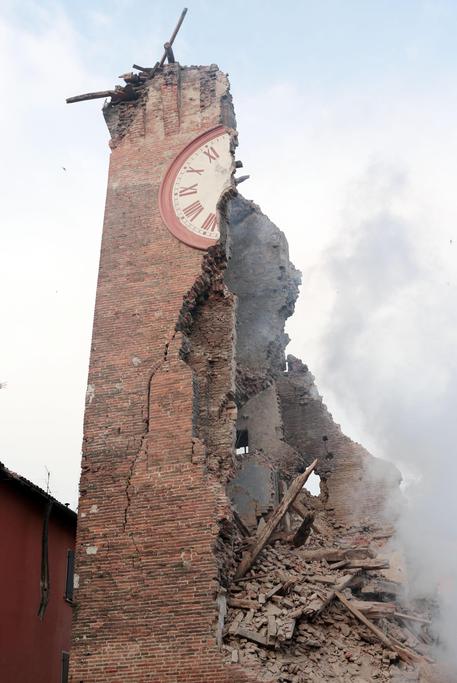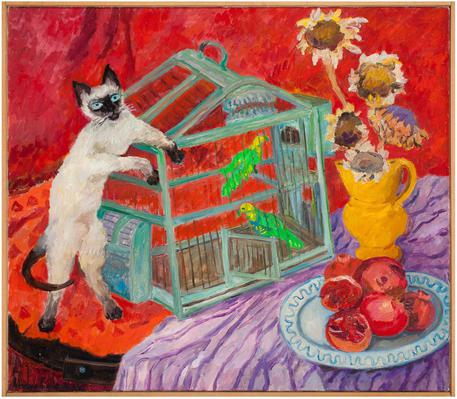Hope for 'major firm' like at Colosseum says Franceschini

(ANSA)
- Rome, June 18 - The fabled but rundown Golden House of Roman
Emperor Nero is looking to the private sector to help fund a new
multi-million-euro restoration project that should see it reopen
after a 13-year closure in four years' time.
Culture
Minister Dario Franceschini said Wednesday the legendary Domus Aurea
would require yet another major restoration. He said the project, in
which he hoped "a big private group will be involved",
would cost an estimated 31 million euros. "The State will do its
part but we'd really like to see the intervention of a major firm,"
as shoe king Diego Della Valle, the Tod's owner, has done for an
ongoing restoration of the Colosseum, Franceschini said. The Domus
has been shut since 2005 for work to make it more stable. After
Franceschini's announcement, archaeologists said restorers will
tackle the "very challenging" job by uprooting the
16,000-square-meter garden that now covers the Domus, and which is in
a state of "serious" disrepair.
After
that, they will excavate the underlying structures, strengthen the
vaults, rebuild the pergolas, clean up the frescoes, and generally
render the entire site safe for visitors. Then a landscape architect
will redesign the garden to recreate its function at the time of
Trajan, who built his baths atop the pleasure dome after Nero
committed suicide in 68 AD. "It was a place for sport, chatting,
and culture, and that's what we hope to restore it to," said
monument director Teodora Filippi. The last reported occurrence of
damage to the Domus was on March 30, 2010 when part of a ceiling in
subsequent baths above it fell in.
The
collapse occurred over what was once the central dome of the
sprawling structure. Some 60 square meters of the baths built on top
of the Golden House by Trajan, came down because of seepage from
heavy rains.
At
the time of the last collapse, then Rome mayor Gianni Alemanno said
he was "very worried" about the state of the structure, one
of Rome's most celebrated tourist attractions. The special
commissioner for the site, Luciano Marchetti, said "more
collapses were possible". The situation, he said, was "one
of extreme alert". The Domus Aurea, built by Nero soon after the
great fire in Rome in 64 AD, was closed after masonry fell from
flaking walls and a high level of dangerous seepage was detected.
A
recent project, still uncompleted, aimed to open up 2,600 square
metres of the site. The top of the Domus on the Colle Oppio (Oppian
Hill) is covered with parks, trees and roads whose weight and
polluting effect are a constant threat. Archaeologists have also been
trying to unearth more of the massive baths that Trajan built.
The
golden palace of the ill-famed Nero (37-68 AD) first re-opened in
June 1999 after 21 years in which it was Rome's best-kept secret -
open only to art officials and special guests. Some five billion lire
(2.5 million euros) were spent in refurbishing the visitable rooms
filled with frescoes of weird animals like winged lions, griffins and
tritons which led to the original coinage of the word 'grotesque',
from the Italian word for cave (grotto). Architecturally, the Domus's
'piece de resistance' is the eight-sided Sala Ottagonale where Nero
is supposed to have entertained his guests with his singing and
lyre-playing on a rotating floor. According to Roman historian
Suetonius, Nero surprised his guests by having marble panels slide
back to shower guests with petals and perfume.
When
the Domus was completed, it actually stretched for 50 hectares and
covered most of the neighbouring Palatine and Celian hills as well.
Nero was reputed to have remarked that finally he was beginning to be
"housed like a human being". After Nero's suicide in 68 AD
the Flavian emperors who succeeded him proceeded to bury all trace of
his legacy.
The
Flavian amphitheater, better known as the Colosseum, was built on the
site of Nero's palace-side lake, while Trajan built his baths on top
of the main part of the pleasure dome. The Colosseum is so-called
because of the massive statue of Nero-as-Apollo, a colossus, that his
successors dragged beside their own monument, after changing the
head. The Domus also has a cherished place in Italian art history
because Renaissance greats like Raphael and Michelangelo lowered
themselves through the oculus on ropes to gaze at and copy the
ancient wall drawings - a crucial stage in the full rediscovery of
how to apply the laws of perspective to painting.

















